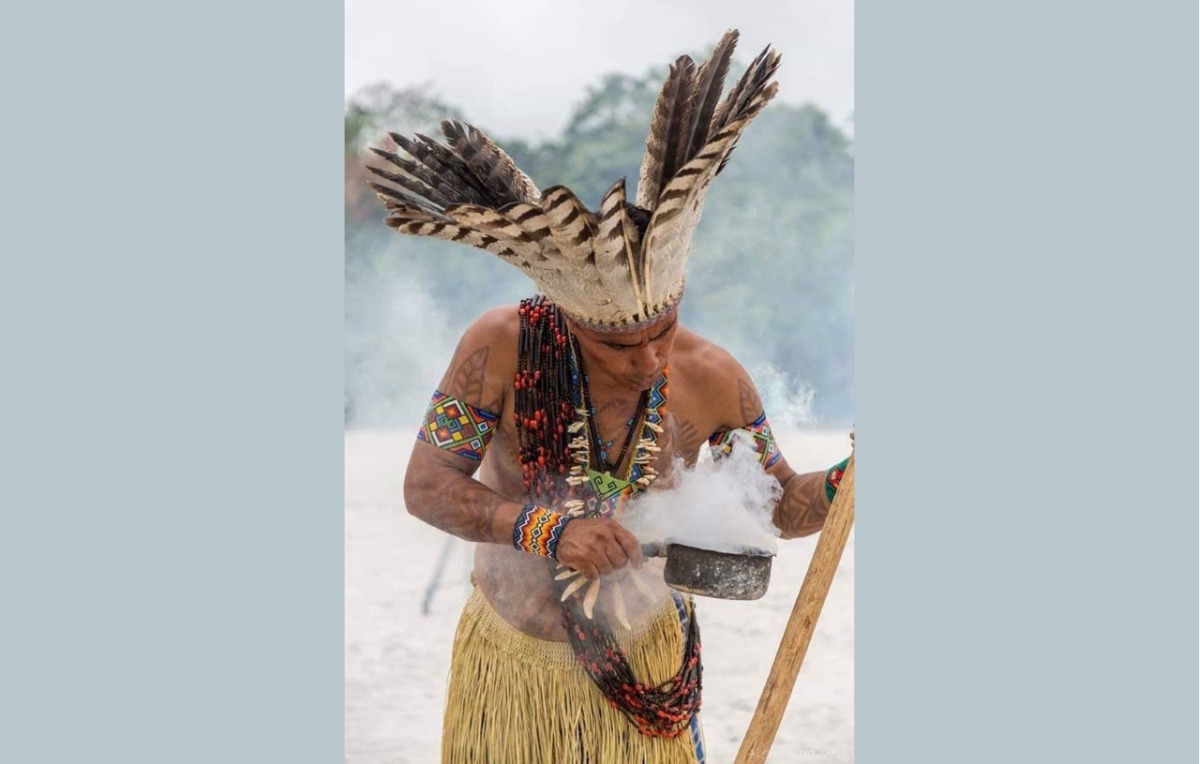
Nature is fierce
An interview with Puwe Puyanawa, the spiritual leader of the Puyanawa tribe in Brazil
In mid-February of this year, I spent two weeks in the Puyanawa tribe’s village in the Amazon jungle. I learned about differentness. I learned to listen, to look, to live, to understand. And also to simply be quiet. I took part in rituals and learned humility. I learned that permission must be asked for everything, even from the forest, rivers, plants and insects. I also learned that rationality is relative and that everything can change in a single moment – such as when the monsoon cloud arrives or the wind begins blowing from the Andes Mountains. That’s just the way things are, and one must adapt to them.
As for many other indigenous tribes in Brazil’s state of Acre, life for the Puyanawa tribe changed completely in the early 20th century as a result of the so-called “rubber barons”, who began taking over Indian lands and resources without any regard for the people already living there. Their first attempts to seek out the indigenous inhabitants took place already in 1901, under the leadership of Colonel Mâncio Lima. His expedition tracked the local Indians for eleven days but were unable to locate them or their settlements, only signs of their recent presence. The Puyanawa tribe successfully evaded Mâncio Lima’s henchmen for ten years. In 1911, however, the colonisers found the tribe, and the massacre began. Some of the Indians managed to flee, while the rest were forcibly Christianised and enslaved on the rubber plantations. Those who refused to work or were unable to adapt to the new system, were killed. Many more succumbed to previously unknown diseases introduced by the colonisers, mainly measles. The Puyanawa tribe’s traditions were banned in a conscious effort to weed out any sign of their culture.
It’s finally time that we wake up and realise that all of us – men, women, children – are part of the Big Forest.
The tribe was relocated from their historical territory to Mâncio Lima’s plantation estate, Barão do Rio Branco on the banks of the Moa River. The Indians refer to the years from 1915 until 1950 as the “period of captivity”. The colonisers separated the men from the women, with the men sent to work on the rubber plantations while the women were assigned to agricultural labour. The Puyanawa had become slaves with no rights – all of their lands had been taken away from them, and for their labour they earned only food and a few pieces of clothing. The forest, which had once been their home and the source of all their traditions, was chopped down in order to make room for sugarcane plantations and livestock farming. Their small jungle paths were turned into “rubber roads”. Their language, which they call Ûdikuî, or ‘the true language’, was banned, and anyone caught trying to speak it was punished. Only the Portuguese language was taught in the schools.
The tribe was finally freed from slavery after Mâncio Lima’s death in 1950. By that time, however, its self-confidence had been hopelessly undermined. The Puyanawa had become Christians who were ill at ease with their Indianness. They were ashamed of their roots. By the 1980s, only the oldest members of the tribe knew how to make bows and arrows and paint their bodies according to their ancient customs. They had also lost their ancient knowledge about plants and their medicinal properties as well as ayahuasca, the sacred ritual drink at the heart of indigenous Amazonian spiritual culture.
Photos by Blat Garcia Verges and Adolf Sanz Monfort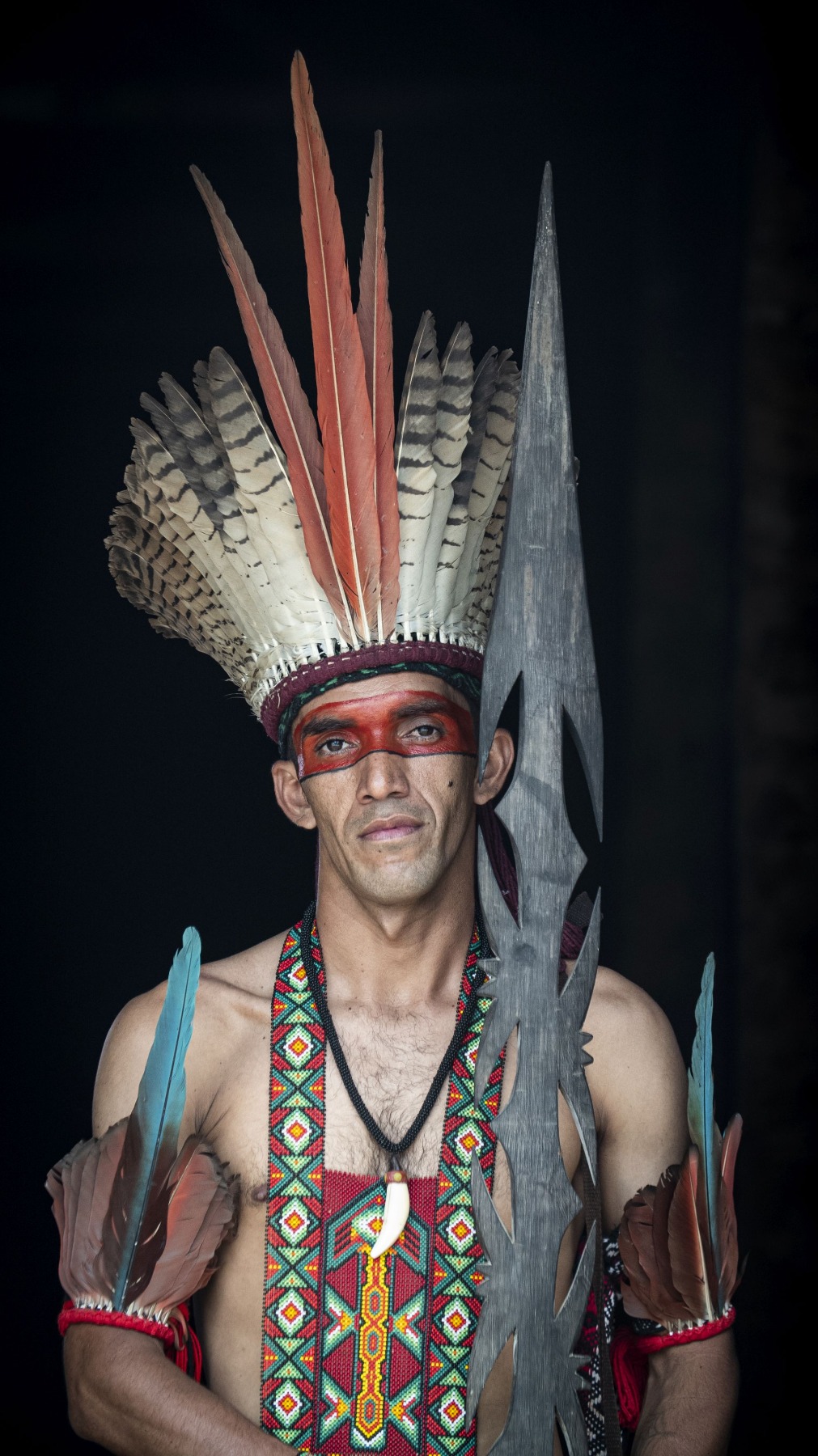
The Puyanawa tribe’s rebirth began only in the 1990s, when they finally succeeded in demarcating their territory, thus legitimising it and closing it to hunters, loggers and other “uninvited guests”. This act symbolically marked the official rebirth of the tribe. However, only twelve of the 385 members of the tribe at that time were able to speak the old Puyanawa language. Today, that language has almost completely been brought back to life, along with the tribe’s ancient traditions. There is still a Christian church in the village, but it has largely fallen silent. Unlike the ritual ceremonies on Saturdays. The former priest – a Puyanawa tribal chief and political leader – has renounced Christianity and is now one of the drivers of cultural processes in the tribe. He was inspired to change direction by ayahuasca, which showed him that there is only one path to the tribe’s survival and future.
The mythological drink, which despite its contradictory status (ayahuasca contains DMT, the hallucinogenic substance dimethyltryptamine that has been on the list of illegal substances since the 1960s; however, this same substance can be found in each of our bodies, reaching the highest concentration at the moments of our birth and death) is also becoming ever more popular in the Western world, returned to the tribe’s lifeblood more than twenty years ago. Both men and women participate in the preparation of ayahuasca, with the men heading into the jungle to collect a special kind of vine, while the women gather the leaves of the chacruna tree. The boiling process begins at around three in the morning. First, the vine stems are broken up with wooden hammers, and then they are boiled in water for eight hours together with the chacruna leaves. Just as no two trees in the forest are alike, each batch of ayahuasca and its effects are slightly different. Sometimes it inhabits and grounds the body; other times it might carry a person on unexpected flights of visions. Ayahuasca is a thread that has helped the Puyanawa tribe renew its historical traditions, its language, its symbols, its drawings and artwork. And it is a part of their daily life. Tribal hunters do not go into the rainforest without ayahuasca, and the drink is used to recover ancient songs.
Puwe Puyanawa, the tribe’s spiritual leader, and his wife, Vari Puyanawa, have played an important role in driving the tribe’s process of rebirth. Since 2013, having in essence become an envoy of sorts for the tribe and begun travelling to Europe, Puwe has put the Puyanawa’s story on the global cultural map. He also participated in the Indigenous Peoples and Climate Change conference in Paris that was organised by UNESCO in 2015, which, to an audience of 40,000 politicians and various experts, highlighted the scale of planetary irresponsibility and damage done to the Amazon rainforests by gas companies, mining businesses and drug trafficking. A documentary film made in collaboration with the Puyanawa tribe is currently in the works. Titled Sacred Land Peyabakebu Puyanawa, it follows 120 years of the tribe’s history. One of its goals is to use the story of the Puyanawa tribe to address the fate of all the indigenous tribes in the Amazon as well as to raise awareness about and advance the slow and difficult process the Puyanawa are going through to regain all of their ancestral lands.
Puwe Puyanawa is unusually tall for an Amazon Indian, although this is also said of his entire tribe. In everyday life and conversation he is a very sincere and down-to-earth man. However, his character changes completely during rituals. Decked out in traditional jewellery and ornaments, he takes on a stateliness that is difficult to describe in words, and when he sings the ancient songs, his voice reverberates with such power that he seems to sing with his whole body. This conversation took place on the steps next to the large ceremonial space in the Puyanawa village, in the Portuguese language (with the help of an interpreter), and against a backdrop of voices and sounds produced by all the visible and invisible inhabitants of the rainforest.
You grew up in a completely different world. What was the turning point for you? At what point did you decide to return to your tribe’s traditions, and what was your motivation to do so?
I spent a part of my life as José Luís – my Christian name – but now I’m one of my tribe’s leaders. A political, religious and cultural leader. I’m also a musician, together with my wife, Vari, and our two daughters. I’m forty years old now, and I was born and grew up in this village. But I’ve had a very close link with the rainforest ever since I was a young child. When you grow up in a place like this, you start learning very early about how to live and get along with nature. I don’t even want to talk very much about the history of my tribe, because it’s a history of suffering. It’s a story about how we lost all of our traditions, our cultural heritage. One hundred twenty years ago we were completely prohibited from practising our tribe’s culture. All of the values related to our culture were rejected and denied. Our way of life was violently altered.
I’m a biologist by training, and I also work as a teacher right now. My family is the biggest in our tribe, and it’s only recently that our tribe has experienced really big changes again, having managed to renew a large part of our historical traditions. Today we’re recognised in Brazil and also everywhere in the world as the Puyanawa tribe. On May 17 it will be exactly twenty years since we began our battle to regain our historical lands. In all, we have 44,000 hectares of land, but we still haven’t regained all of it. Some of it still remains in private hands, and, in order to regain that land, we have to buy it from the existing owners – for approximately four million Brazilian reais.
Right now, we have 670 members in the Puyanawa tribe, but those are only the people living in this village. There are lots of other Puyanawa people living elsewhere. When the colonisers invaded, 120 years ago, some of our ancestors managed to escape, and they never again returned to their ancestral lands. Altogether, we are 150 families today – spread across two tribes.
When I was seventeen years old, I realised that I really wanted to try drinking ayahuasca, to feel the power of this ancient medicine and to gain knowledge. For our ancestors, the ayahuasca ritual was an integral part of their spiritual culture, but when the tribe was relocated to this area, the practice was categorically banned. Between 1995 and 2000 we intensely tried contacting other tribes and asked them to help us regain this knowledge. Actually, this process had begun already in the late 1970s, when shamans from other tribes – pajés from the Asháninca, Huni Kuin and Yawanawa tribes – visited our village on their journeys and helped to plant the seed of this ancient knowledge in us again. I was still only a very young child back then, but when I started showing an interest in it, I was most troubled by the fact that our tribe’s leaders at the time did not have any of this knowledge themselves. Yes, some of them knew about ayahuasca, but they didn’t want to talk about it, because they belonged to the Christian faith, which had banned the practice. In the beginning, we didn’t have enough knowledge about making ayahuasca, either, and we made a lot of mistakes. The Asháninca and other tribes provided a lot of help to us in renewing this tradition, as did the other groups that prepare and drink ayahuasca, such as the Santo Daime and UDV. Although, it took five years from the moment that we began making and using it again to truly awaken our ancestral spirit, which had almost completely fallen asleep.
Photos by Blat Garcia Verges and Adolf Sanz Monfort
The spirit really only regained its strength in 2006 or 2007, and since the time that my wife, Vari, and I began walking this path, ayahuasca has let us remember our tribe’s traditions, many of which had already died out. Including our language, our songs, our symbols... In 2008 we opened this large ceremonial space (called a maloca) and cultural centre, where all of the tribes living in Acre state could meet from time to time. And it was at the first of those meetings that we were able to renew much of the Big Forest knowledge that we had lost when the history of our tribe was disrupted. I remember when I and other representatives of our tribe opened this meeting, to which people from fourteen different tribes had gathered, we had nothing to show the others of our own culture. Only fifteen people from our tribe had ever drunk ayahuasca before, but I wasn’t worried, because I knew that this was only the beginning.
Now, twelve years later, most of the tribe is involved in the process. Every Saturday a big ceremony takes place in the village, and it always draws more than a hundred people – from our own tribe and also people from the surrounding area. And at each of these ceremonies we are strengthened in our growth and development. Both spiritually and socially. Now we have our own songs in our own language. We’ve evolved greatly, and over time we’ve learned immensely about our land, our history, plants and their medicinal properties. Kasiki, who is the village chief, and I are the main drivers of this process. Through ayahuasca we’ve gained greater strength, security and conviction. Moreover, we can share this knowledge with others. I have no doubt that ayahuasca can help save the planet. But, I don’t think every ayahuasca is capable of doing so. It has to have the proper direction and goal.
What is ayahuasca? Other than a combination of two plants: a vine and chacruna leaves.
For me, ayahuasca is the greatest of teachers – in defence and protection, in the guiding of knowledge, in understanding, in wisdom. It is the path on which one can learn the knowledge of the ancestors, the knowledge of the world as a whole.
Photos by Blat Garcia Verges and Adolf Sanz Monfort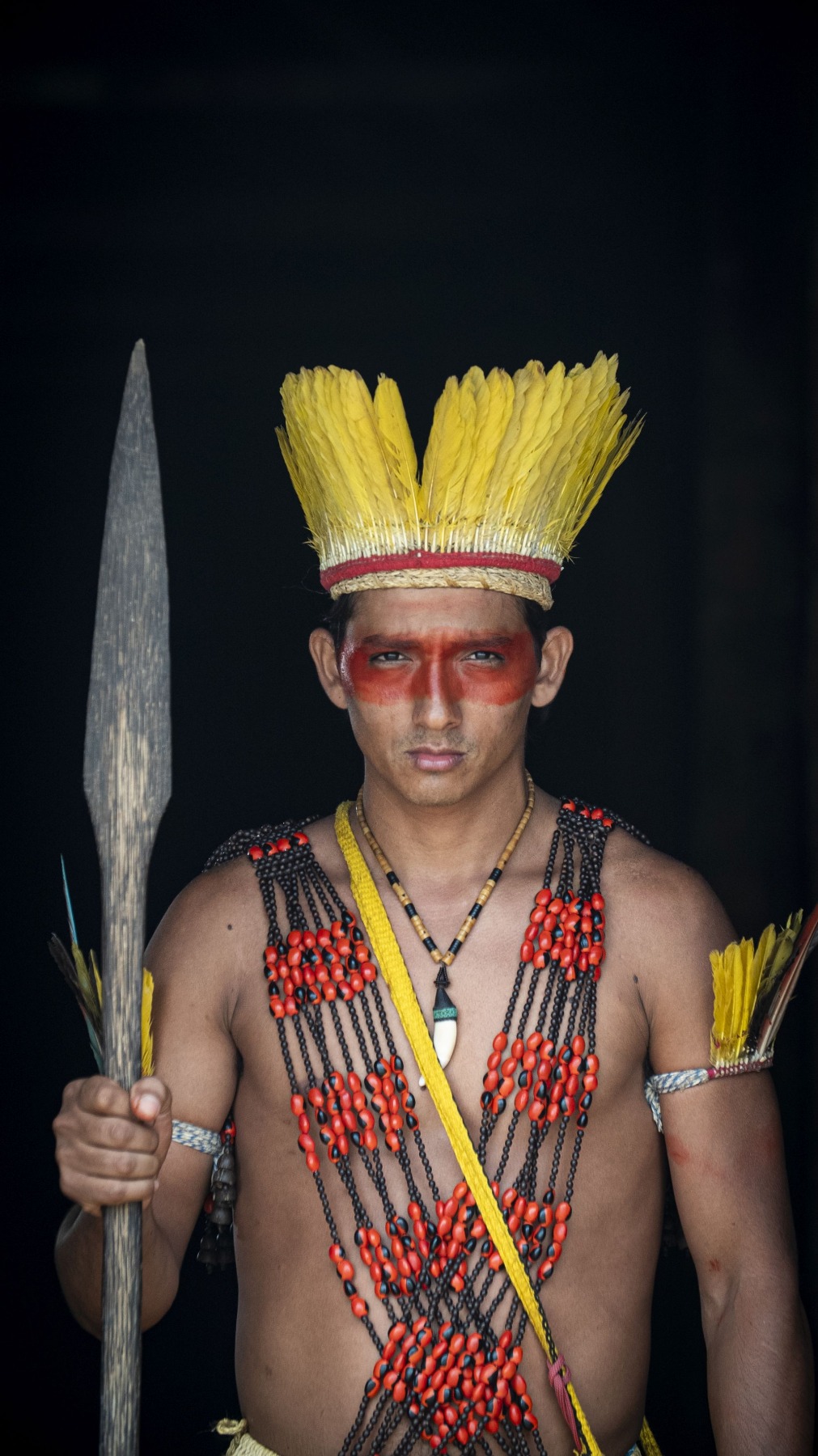
Why was it banned, and why is it still banned?
In the past, ayahuasca was banned because it was a part of our culture. Back then, absolutely everything linked to our culture was banned, including ayahuasca. Nowadays, I think it’s banned because the people who implemented this ban and continue to enforce it don’t actually know what ayahuasca is. So, it’s banned due to a lack of knowledge.
Would you have been able to return to your tribe’s traditions, to your cultural heritage, without the help of ayahuasca?
Maybe, but in that case it would have been a much longer process. Many, many, many years. Because there are certain things you can get only through ayahuasca. For example, our spirituality is very closely linked to ayahuasca, but it’s possible that ayahuasca isn’t necessary for the rest of our tribe’s cultural life. Although these two entities – culture and spirituality – might seem like the same thing, they’re actually not. Culture is found in songs, drawings and artwork, dances, food. It’s a part of everyday life, an integral part of everyday life. Culture is in the family, but spirituality is something you consciously need to work at.
Photos by Blat Garcia Verges and Adolf Sanz Monfort
What is spirituality?
For me, spirituality means knowing our ancestors’ teachers, knowing the ancient symbols that have protective powers and so on. For example, the source of a tribe’s spirituality always remains in the land where the tribe has originated. The people who visit this place can obtain this spiritual heritage – they can get it from the place where this knowledge originated. When I drink ayahuasca, I also see how and in what kinds of houses my ancestors lived. I can picture this whole process that my tribe has gone through in order to arrive at this moment – five generations already. But of course, there are also people who don’t drink ayahuasca, and they can have these visions, too. But it’s much harder.
Undeniably, one can also arrive in this special state without the help of plants. It can be done through meditation. I mean, with meditation you can achieve the same level of spirituality as you can with ayahuasca. In various cultures you can find various plants that have this power – so-called “master plants” – to take you to this special world.
Do you believe that ayahuasca is itself a spirit, or is it a drink that connects you with the spirit.
It’s both. It’s a spirit that helps you to connect.
Photos by Blat Garcia Verges and Adolf Sanz Monfort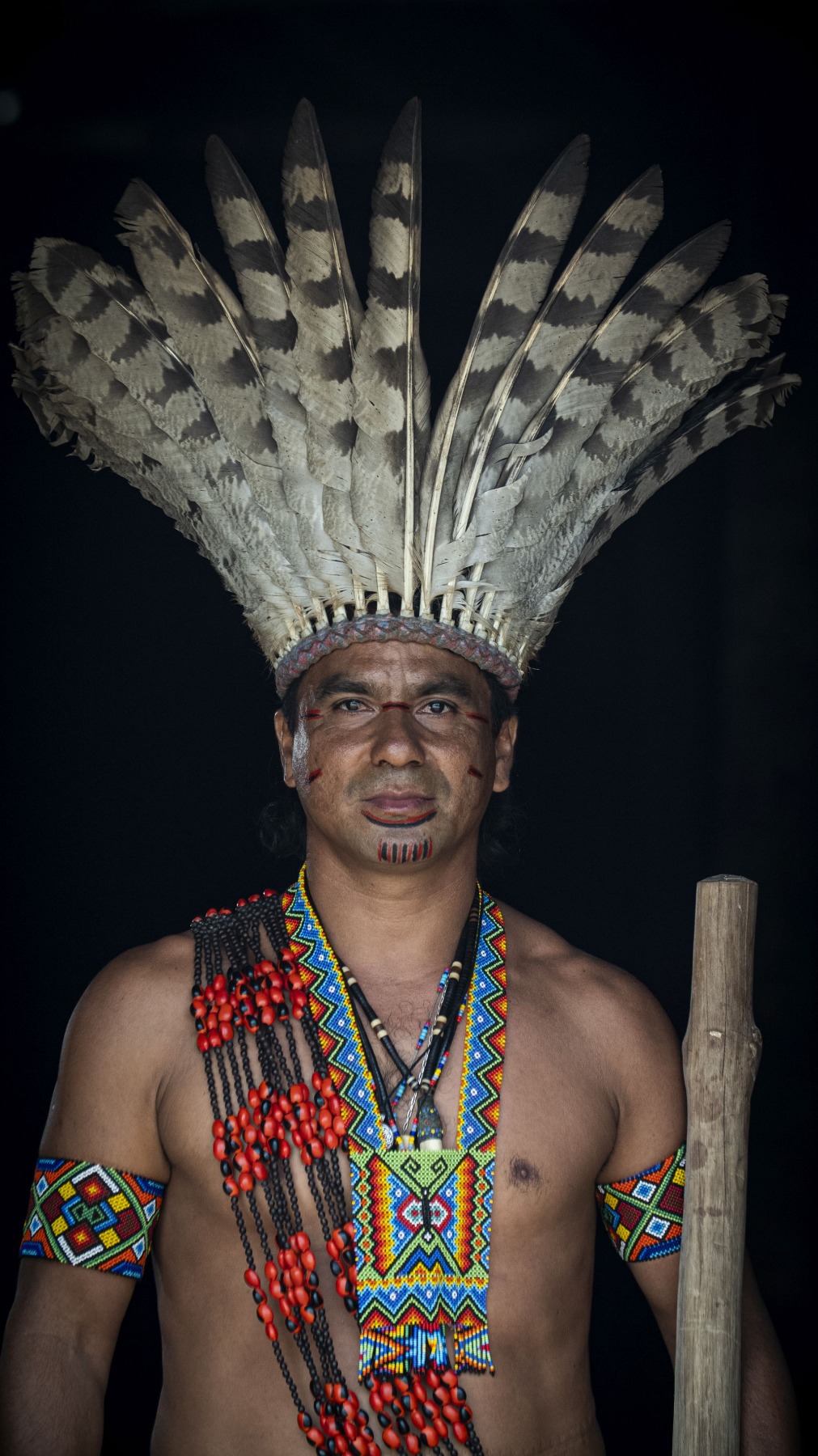
Do you think plants have a kind of intelligence? After all, how did the tribal ancestors long ago know that, of the more than 30,000 plants growing in the Amazon rainforest, precisely these two plants need to be combined?
The ayahuasca vine is a plant that has power, while the chacruna is a plant that has light. And together, they give you the strength to arrive at the light. There are very many legends about the origins of ayahuasca; each tribe has its own legend. Some say that ayahuasca came from the jiboa (the snake, or earth goddess), but no one knows exactly how it happened. There are only various stories.
As a trained biologist, do you believe that plants have consciousness?
Plants have consciousness. We are the ones who don’t have consciousness. Unfortunately, as ayahuasca has become more and more popular on an international scale, there are more and more people who are trying to make this drink and pretending – or proclaiming themselves – to be shamans. They add other stuff to the drink, and actually they make poison instead of ayahuasca. You already saw how we make ayahuasca here – it’s made of only the vine, chacruna leaves and water. But there are various kinds of ayahuasca, and I don’t mean to say that those with additional ingredients mixed in are always bad. But the way in which they’re made isn’t the path that leads to the light...
Photos by Blat Garcia Verges and Adolf Sanz Monfort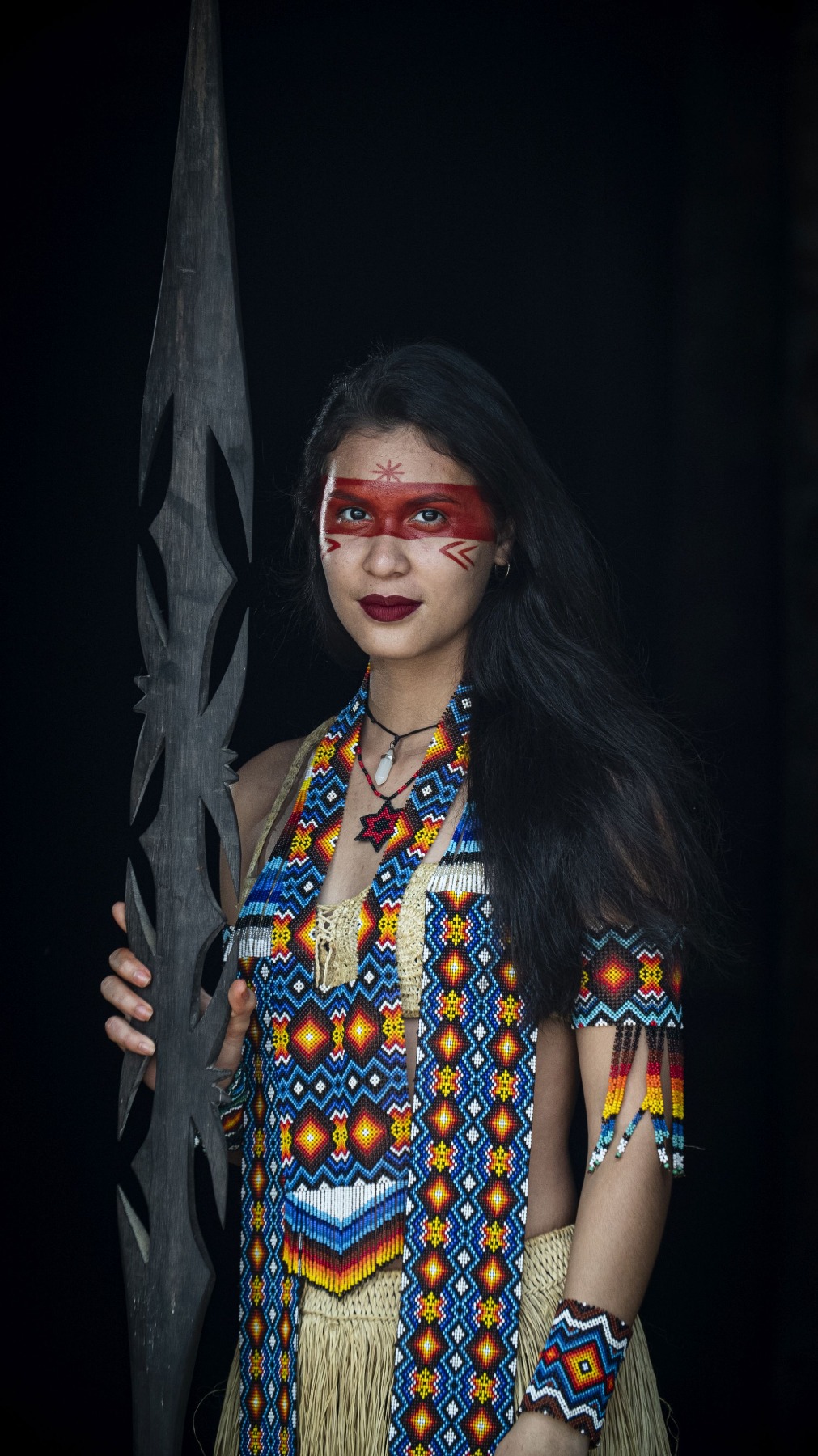
Right now, ayahuasca is more popular than ever in the Western world. Some say the plant itself is promoting this popularity, in order to survive. Do you believe that, or is it just a story?
I believe that at moments like this – like what we’re experiencing right now, with the world undergoing such major changes – ayahuasca can help people to become more conscious. I think that people who drink ayahuasca in its true land of origin, in the jungle, they can begin to see the stress that nature is experiencing right now. The results of this stress are found everywhere in the world; there’s practically no place on earth that’s immune to this stress. The forest and nature can be destroyed, but the forest will grow back. But if people are destroyed, they won’t be able to be reborn in the same way as we are right now. Maybe they’ll be reborn as a different kind of people, but not like the humans we are now. Actually, we’re the ones who need nature. Not the other way around. And this knowledge needs to be spread to all of the people with whom we share this planet. That is, the knowledge that nature means everything together: the rivers, the plants, the birds, and us humans... We cannot live without oxygen, which is produced by nature.
Photos by Blat Garcia Verges and Adolf Sanz Monfort
In recent years, there’s been serious flooding and fires all over the world. All of that’s happening because of our malevolent misuse of natural resources. Of course, we can use natural resources, and we need to do so to live, but we have to do so with wisdom and humility.
Right now, our tribe is working on a project that focuses on protecting nature and the wise use of natural resources: the forest, water, etc. Our goal is to establish alliances with other tribes all around the world in order to not only protect the Amazon region and forest but to promote environmental protection on a global scale. Of course, planting trees is a good thing, but it’s much better to save and not destroy the trees that already exist. Because you can plant a whole jungle, but it’ll take at least five hundred years for it to mature. So, it’s much wiser to save those trees that have already been here since ancient times. As a part of this project, we’re also working with several other organisations around the world in order to help people revive their lands. We have this ancient knowledge from our ancestors, and we’ve been given it to also share it with other people – with people who want to learn it and take part in this process of sharing. We all need to work together in order to protect the land, the sea, the rivers, the rainforests and our own lives.
Why are so many calamities taking place in the world? In many countries, people have disrupted the biological cycle. For example, the natural balance of insect populations has been disrupted. So, in their concern for their monocultures, people have destroyed one type of insect, which breaks one link in the chain – one type of insect that eats another type is gone, and therefore those remaining insects start attacking people. The industrial world has poisoned everything, including the food we eat on a daily basis. It’s finally time that we wake up and realise that all of us – men, women, children – are part of the Big Forest.
Photos by Blat Garcia Verges and Adolf Sanz Monfort
In the past, the Amazon tribes sometimes ruthlessly fought against each other. Now they’re united. Has this been influenced by the political situation and their common cause in the fight to preserve their historical heritage, traditions and lands, or is it a natural evolutionary process for the tribes?
I think that in the past our battles and also wars revolved around spiritual strength and power. And in a way, “white contact” was the reason why we began to unite. It was the white man who came to destroy us, and later it was the white man who came to help us and support us.
As humans, what is our role in the natural ecosystem as a whole? You said that nature does not need us. Then why were we born and why do we still exist?
There are these two parts to a person: the one that builds up and the one that tears down. We need nature in order that we, as humans, can build a better life for ourselves. But we know full well that for many people, nature is only there as something to destroy. Our greatest task is to learn to use nature wisely. We are the sons and daughters of the earth. But most often it feels as if we’re here...and nature is over there. But we need to realise that this is the moment we really need each other, nature and us. Nature needs us today – it needs us to help protect it. And, if we do this, we ourselves will live better – protected by the forests and the rivers.
Photos by Blat Garcia Verges and Adolf Sanz Monfort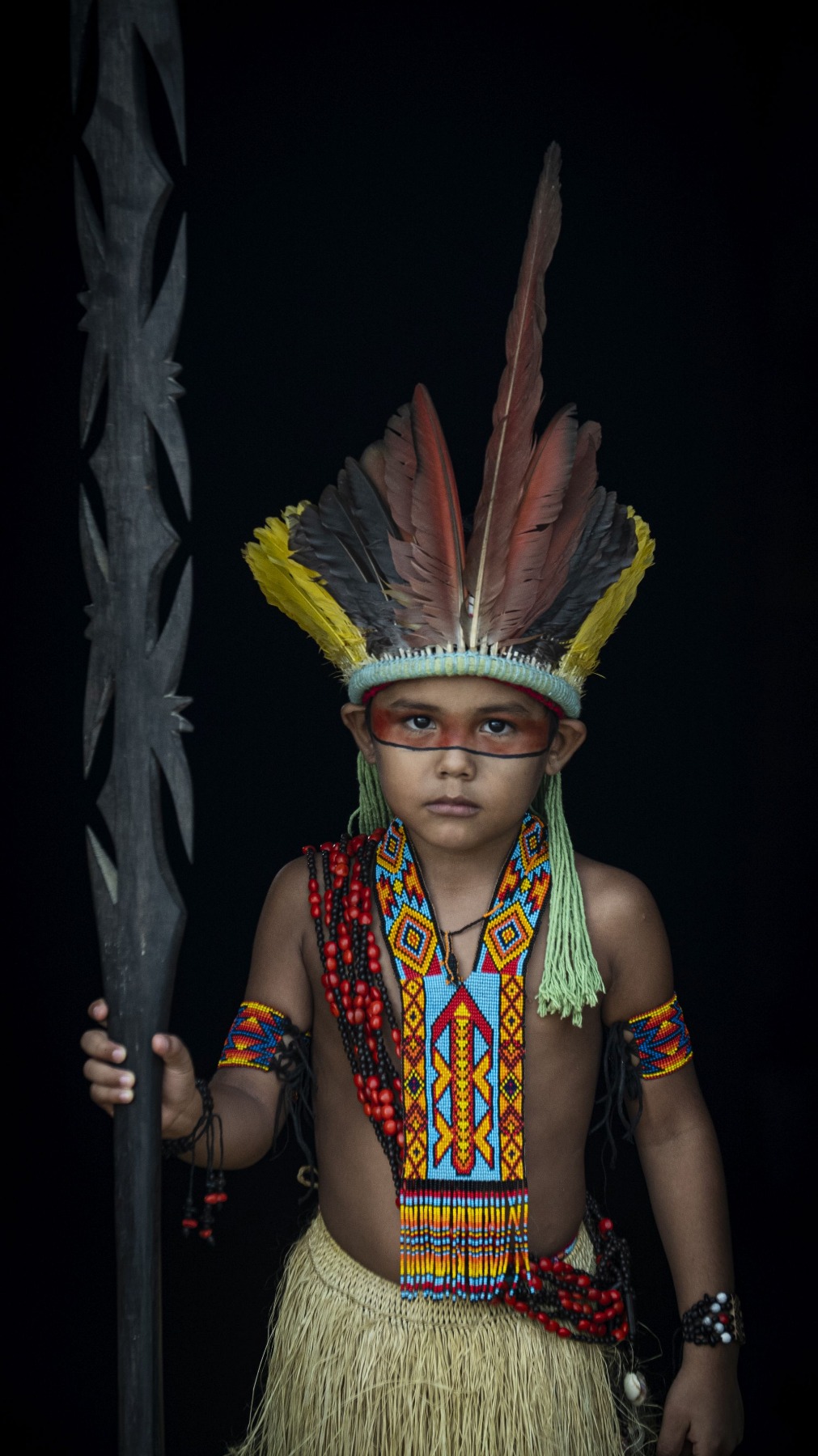
Isn’t it so that right now nature is just about ready to throw us out because we’ve overstepped all of the red lines?
I think that in many parts of the world nature is already doing just that. Nature is very fierce. For example, it’s no surprise that the present coronavirus began in China, one of the countries that has most ruthlessly exploited the earth’s natural resources. But we nevertheless have to do all we can to protect ourselves. After all, we all wish to live happy lives. Do you know what this is [Puwe points to the sky, which the setting sun has coloured a strange shade of red. – Ed.]? It’s a sunset that says tomorrow will be a stormy day. Who taught me that? Our ancestors, because they had good knowledge about the natural movement of this planet, and I’ve taken over this knowledge from them.
*This interview with Puwe Puyanawa was conducted for the upcoming Arterritory.com publication Arterritory Conversations: Detox and Healing for the Planet, which will be published in May of this year.